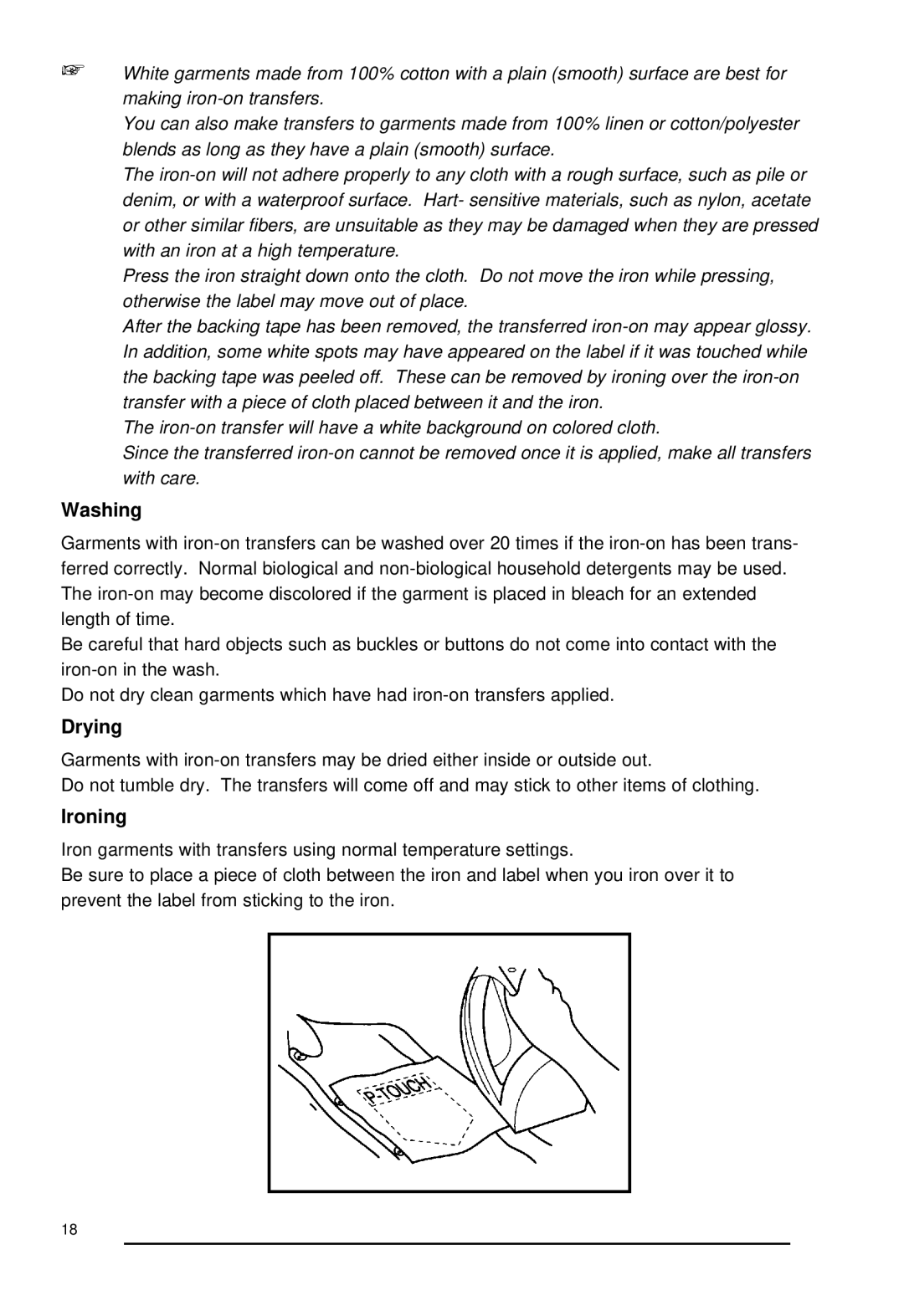+White garments made from 100% cotton with a plain (smooth) surface are best for making iron-on transfers.
You can also make transfers to garments made from 100% linen or cotton/polyester blends as long as they have a plain (smooth) surface.
The iron-on will not adhere properly to any cloth with a rough surface, such as pile or denim, or with a waterproof surface. Hart- sensitive materials, such as nylon, acetate or other similar fibers, are unsuitable as they may be damaged when they are pressed with an iron at a high temperature.
Press the iron straight down onto the cloth. Do not move the iron while pressing, otherwise the label may move out of place.
After the backing tape has been removed, the transferred iron-on may appear glossy. In addition, some white spots may have appeared on the label if it was touched while the backing tape was peeled off. These can be removed by ironing over the iron-on transfer with a piece of cloth placed between it and the iron.
The iron-on transfer will have a white background on colored cloth.
Since the transferred iron-on cannot be removed once it is applied, make all transfers with care.
Washing
Garments with iron-on transfers can be washed over 20 times if the iron-on has been trans- ferred correctly. Normal biological and non-biological household detergents may be used. The iron-on may become discolored if the garment is placed in bleach for an extended length of time.
Be careful that hard objects such as buckles or buttons do not come into contact with the iron-on in the wash.
Do not dry clean garments which have had iron-on transfers applied.
Drying
Garments with iron-on transfers may be dried either inside or outside out.
Do not tumble dry. The transfers will come off and may stick to other items of clothing.
Ironing
Iron garments with transfers using normal temperature settings.
Be sure to place a piece of cloth between the iron and label when you iron over it to prevent the label from sticking to the iron.

